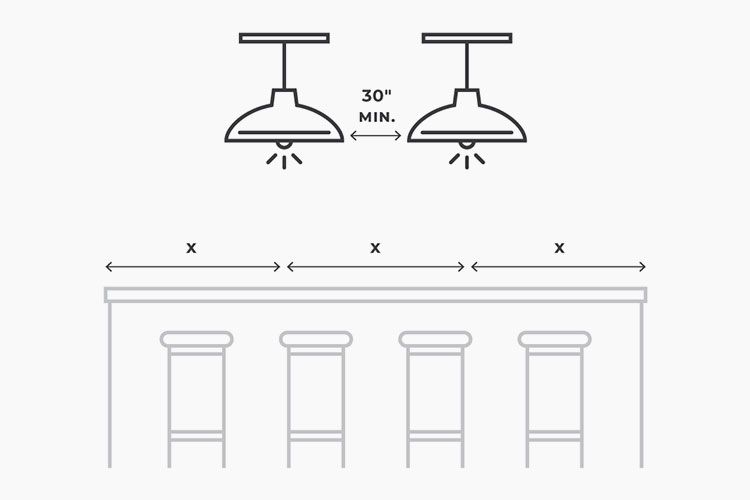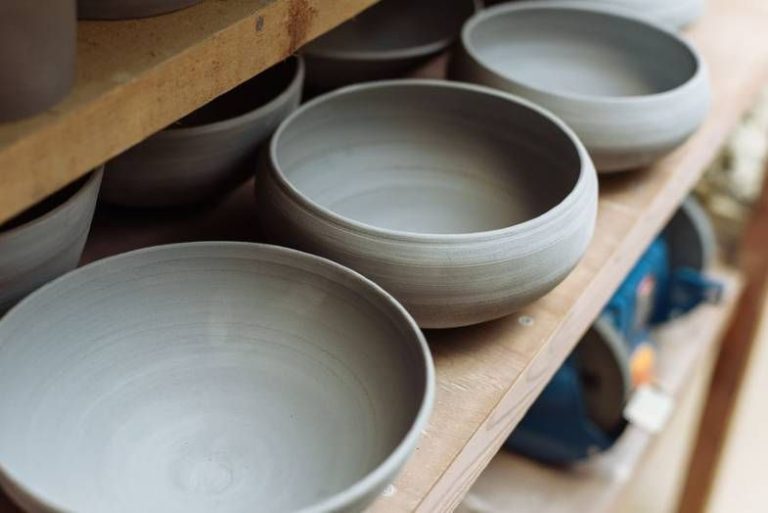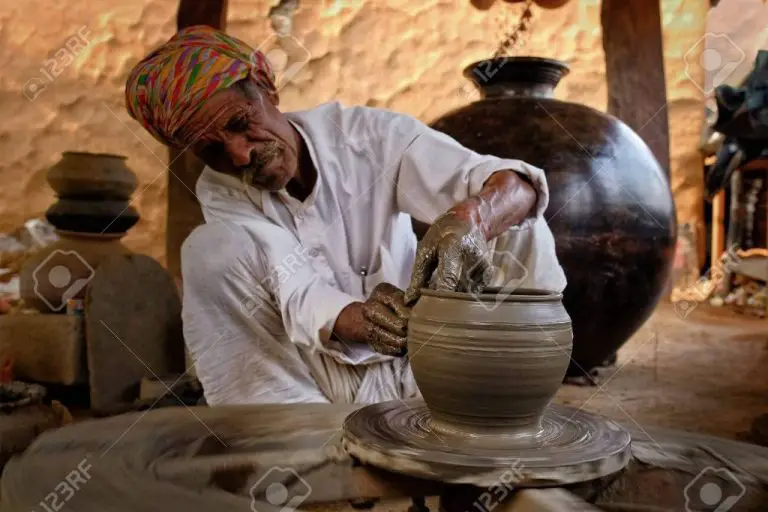What Is An Example Of Enamelling?
What is Enamelling?
Enamelling is the process of decorating metal objects by applying powdered glass to their surface and firing it in a furnace to fuse it to the metal. The glass powder melts and fuses to the metal object, forming a smooth, durable vitreous coating.
The origins of enamelling date back over 3,500 years to the Bronze Age. Some of the earliest examples were found in Mycenaean Greece, Mesopotamia, and Egypt. Over the centuries, the technique spread across Europe and Asia. Enamelling was especially popular in the medieval and Renaissance periods for decorating jewelry, reliquaries, and other metalwork.
The term “enamel” comes from the Old High German word “smelzan” meaning “to melt.” True enamels are made from powdered glass suspended in a gum solution or oil to make them easier to apply. The glass powder melts into a glossy surface coating when fired at temperatures between 1,100-1,450°F.
Enamelling involves multiple steps. The metal surface must be cleaned before applying enamel powder mixed with a liquid medium. After drying, the piece goes through multiple firings at precise temperatures to fuse and polish the enamel. Artists build up layers of translucent enamel to create intricate designs and vivid colors.
While historically done on jewelry and metalwork, enamelling today is used on other materials like glass, ceramics, and plastics. It remains a popular technique for creating durable, colorful designs on metal surfaces.
Enamelling Techniques
There are several techniques used in enamelling metal to produce decorative objects. Some of the most common techniques include:
Cloisonné Enamelling
Cloisonné enamelling involves creating small compartments or cells surrounded by thin metal wires or strips on the surface of the metal object. The cells are then filled with powdered glass enamel and fused to the surface by firing in a kiln. This technique allows for precise decorative patterns and images to be created with different colors of enamel separated by the metal wires or cloisons (meaning “partitions” in French). Cloisonné originated in the Byzantine Empire and was later developed extensively in China.
Champlevé Enamelling
Champlevé enamelling involves carving out cells or cavities in the metal object and then filling these recesses with enamel. The enamel is fired and fused to the surface. This technique allows large areas of color to be created by etching and chiseling troughs into the metal foundation. Champlevé was practiced in Western Europe, especially during the Romanesque period.
Basse-taille Enamelling
Basse-taille involves engraving or etching a pattern or design into a metal object and then filling the recesses with translucent enamel to create detailed, painterly images and designs. The enamel enhances the engraved decoration underneath it. Basse-taille was highly developed in 16th century Limoges, France.
Other enamelling techniques include plique-à-jour which involves creating enamelled “windows” to let light shine through, and painted enamels where enamel is applied like paint over engraving. Enamels can also be worked into other materials like gold, silver, copper and bronzes.
Cloisonné Enamelling
Cloisonné enamelling is a technique where the enamel is applied within cells or cloisons created by thin metal strips (https://anordain.com/blogs/news/enamelling-techniques-cloisonne-enamel). The metal strips form the outline of the design and the different colored enamels are poured into each cell.
The origins of cloisonné date back to the 14th century in China during the Ming Dynasty. It was originally used to decorate vases, bowls and other metal objects. The cloisonné technique spread to Japan and by the mid-19th century was adapted in Europe where it was used to make jewelry.
To create a cloisonné piece, first a metal base is formed into the desired shape. Thin strips of copper or bronze are bent and attached to follow the contours of the design. The cells formed by the metal strips are filled with powdered enamel and fused to the surface by firing in a kiln. Multiple firings are required to build up the layers of enamel within each cloisonné cell (https://www.britannica.com/art/cloisonne). The surface is then ground down and polished to create a smooth finish.

Champlevé Enamelling
Champlevé is an enamelling technique where cells or cavities are carved or etched into the surface of a metal object, and enamel paste is applied into the recessed areas. The piece is then fired at around 750-850°C to fuse the enamel to the surface. Once cooled, the surface is polished to create a smooth finish.
This technique dates back over 2000 years and was practiced in ancient Rome, Greece, and Egypt. Some of the most elaborate examples come from 12th century Limoges, France where monks produced champlevé works for reliquaries, crosses, and other ecclesiastical objects.
To create a champlevé enamel, the desired design is engraved or etched into the metal surface, usually copper or bronze. The cells or cavities are carved to specific depths depending on the desired effect. Translucent enamels can be layered to create color gradations. After the cells are filled with enamel powder made of finely ground glass mixed with fluxes, the piece goes through multiple firings to fuse the enamel. The surface is then polished smooth.
Champlevé allows for very intricate, precise designs since the enamel stays neatly within the prescribed cells. It was the most common technique until overtaken by cloisonné enamelling in the 13th century. Champlevé is still practiced today by enamellers and jewelry makers.
Basse-taille Enamelling
Basse-taille enamelling is a technique that involves engraving a metal surface, usually silver or gold, and filling the recesses with translucent enamel to create a shaded effect. This method allows for delicate detailing and extensive tonal effects not possible in other enamelling techniques.
The earliest surviving example of basse-taille enamelling dates from the late 13th century. It became widely used in Europe during the 14th, 15th and 16th centuries as an elegant way to decorate jewelry, boxes, cups and other metalware [1].
To create a basse-taille enamel piece, first a metal object is engraved or etched with a detailed design. The recessed areas are then filled with translucent enamel and fired at high heat to fuse it to the metal. Multiple layers of enamel in different colors can be added to create subtle blends and shading. The surface is then ground down and polished to make the enamel flush with the remaining metal. The contrast between the enameled recesses and the polished metal relief mimics the chiaroscuro effects of painting.
Basse-taille enamelling requires great skill and meticulousness to engrave the design and apply multiple layers of enamel. It allows for nuanced designs that showcase both the beauty of luminous enamel color and shining precious metals.
Other Enamelling Techniques
In addition to the main enamelling techniques like cloisonné and champlevé, there are a few other notable techniques that have been used historically and are still sometimes employed by contemporary enamel artists:
Plique-à-jour: This technique involves creating a translucent enamel effect without any backing, essentially “enamelling in the air.” Thin wires or strips form cells that contain the enamel powder which is then fired. The resulting piece resembles stained glass with the light shining through. Plique-à-jour was refined in the Gothic and Renaissance eras and is considered very challenging technically.1
Limoges: Originating in France, Limoges enamelling involves applying opaque enamels onto copper. The enamels build up layer by layer, with each fired at about 1,500°F. Limoges enamelling allows for rich colors and blending effects. It was used historically for jewelry boxes, plaques, and other decorative objects.2
Paillonné: This technique includes applying tiny bits of silver or gold foil underneath translucent enamel. When fired, this creates a glittering effect as the foil shards reflect light through the enamel. Paillonné was popular during the Renaissance and Baroque periods.
Enamelling Materials
The primary materials used in enamelling are metal and glass. The metal serves as the base, while the glass powder melts to form the decorative enamel coating. Copper is the most common metal used, as it can withstand the high firing temperatures needed to melt the glass. Silver and gold are also popular base metals for enamelling jewelry and other decorative pieces.
The glass used for enamelling is a specially formulated powder or frit. The glass contains minerals like silica, soda, and potash mixed with metallic oxides that give the enamel its color and opacity. Common colors used in enamelling include white, black, blue, green, yellow, red and purple. By controlling the mineral composition, enamellers can create glass powders with a wide array of colors and effects.
According to JAPANNING OR ENAMELLING METALS, the materials required for enamelling include the metal base, glass frits or powders for the colors, medium for adhering the powder, and tools for applying and shaping the enamel. The glass powder melts when fired in a kiln at temperatures ranging from 1,200-1,600°F depending on the materials used.
Notable Enamel Artists
Enamelling has a long and rich history as an art form, with many talented artists taking up the intricate technique over the centuries. Some of the most famous enamel artists who have helped elevate the artform include:
Peter Carl Fabergé was a Russian jeweler in the late 19th and early 20th centuries, best known for the spectacular Fabergé eggs he crafted for the Russian Tsars. Fabergé studios produced some of the most exquisite and technically accomplished enamels ever made, often with egg-shaped objects featuring delicate floral patterns in translucent enamel.
Jean Fondeur was one of the most iconic French enamelists of the 20th century, known for his abstract, cubist-inspired enameled jewelry. Fondeur helped push the boundaries of the enamel arts and gained international acclaim for his innovative designs and mastery of technique.
Janet Leach brought new creative energy to enamelling in the mid 20th century as part of the British Studio Pottery movement. Her abstract enamel panels feature brilliant colors and fluid lines etched into the surface. She helped establish enamelling as a contemporary art form.
Yoshiko Kakudo is one of the preeminent Japanese enamel artists, revitalizing the traditional Namikawa style of cloisonné. Kakudo’s delicate floral vessels and other enamel objects are widely collected. Her mastery of color and form within the confines of cloisonné demonstrate the enduring vitality of the technique.
To browse more iconic enamel artists through history, visit this pinterest board: https://www.pinterest.com/pin/famous-enamel-artists–332210909996843122/
Contemporary Enamel Art
Contemporary enamel art is experiencing a revival, with new artists using innovative techniques and fresh approaches. Current trends include mixed media works incorporating enamel with other materials like wood, acrylics, and metals. There is also an emphasis on abstract, minimalist pieces in addition to representational works.
Some notable contemporary enamel artists include:
- Carolyn Tallent, known for her nature-inspired jewelry pieces that blend enamel with precious metals and stones (Source).
- Patricia Lee Kensill, who creates vibrant enameled sculptures of botanicals, animals and figurative works (Source).
- Rachel Glowacki, acclaimed for her abstract bowls and wall art enamels featuring colorful geometric shapes.
There are also an increasing number of exhibitions dedicated to contemporary enamel arts, bringing greater visibility to this resurgent art form.
The Appeal of Enamel
Enamel work has existed for thousands of years and continues to endure as an art form due to its unique qualities and aesthetic beauty. Made from powdered glass applied to metal, enamel produces vibrant colors and patterns that maintain their brilliance over time. The glass adheres to the metal through extremely high heat, resulting in a smooth, glossy surface.
One of the key appeals of enamel is its durability and colorfastness. Properly fired enamel is permanently fused to its metal base, making it highly resistant to chipping, fading, and wear over centuries. This allows enamel objects like jewelry, dishes, and decorative art to become timeless heirlooms passed down through generations. Enamel’s glasslike finish also imparts a luminous quality, with light playing off its glossy surface.
The specialized techniques involved in enameling, such as cloisonné and champlevé, add to its appeal as an intricate craft requiring mastery. The translucent colors and ability to create delicate patterns attract artists and collectors who appreciate fine detail work. With its deep history yet timeless beauty, it’s no wonder enamel continues to be treasured and kept alive by devotees today.
“Whether you’re a collector or a fashion enthusiast, this pin is a testament to the enduring appeal of enamel art and the joy it brings to those who wear it.” (https://www.aliexpress.com/i/1005004333340155.html)






